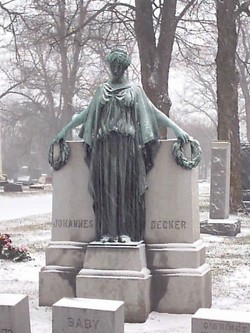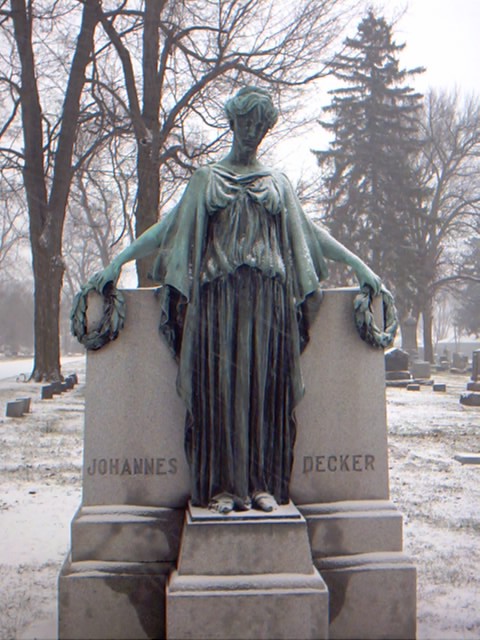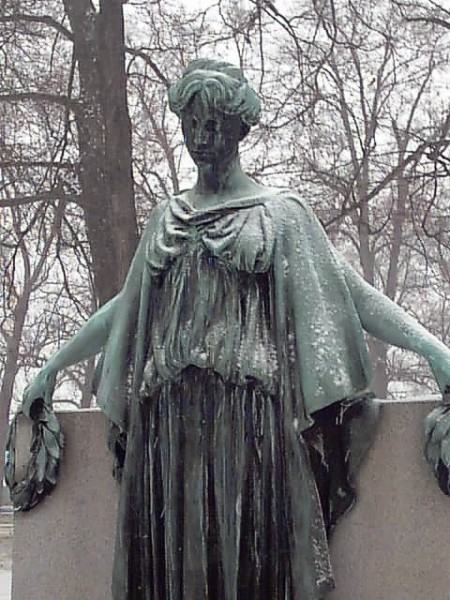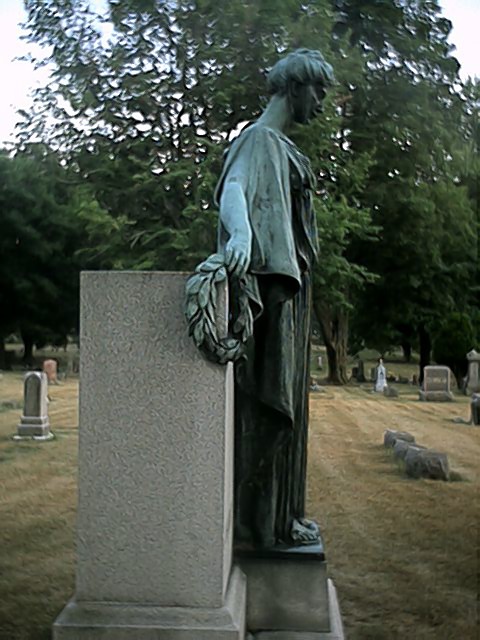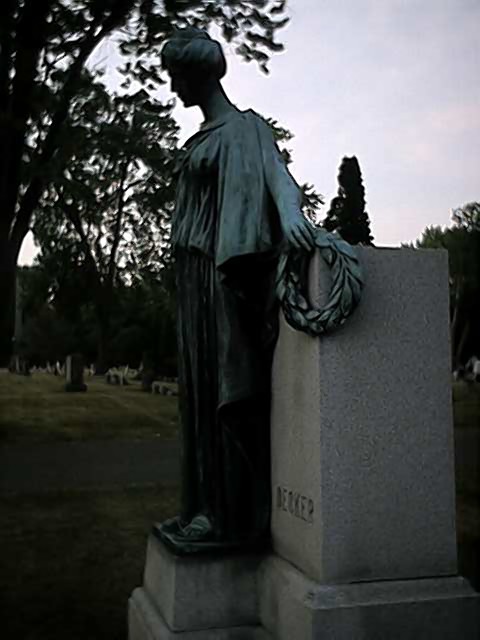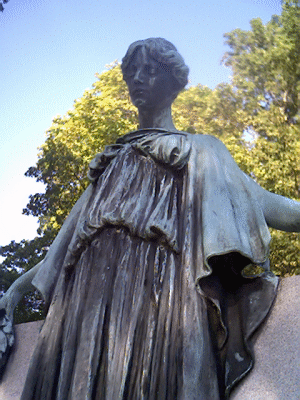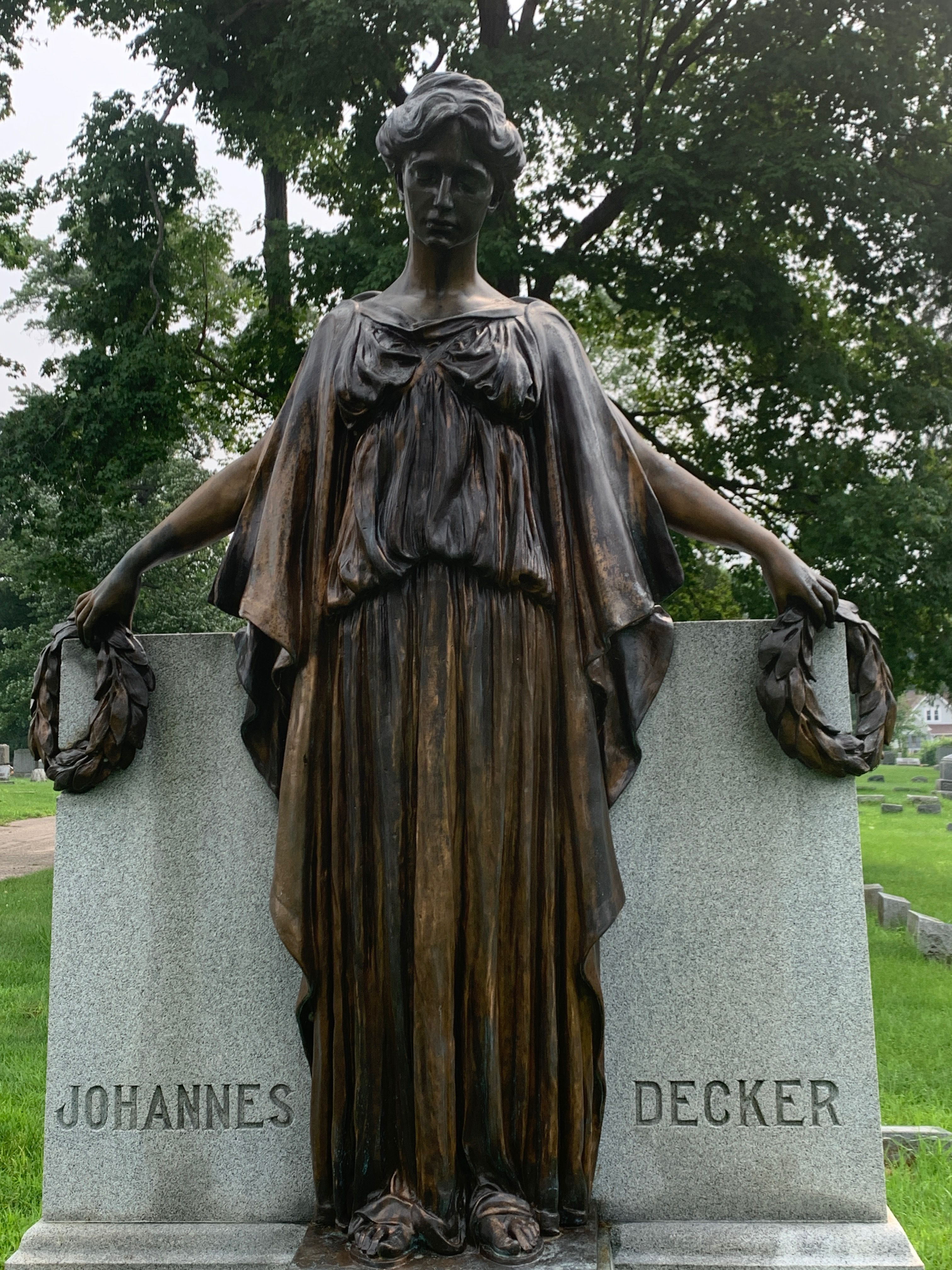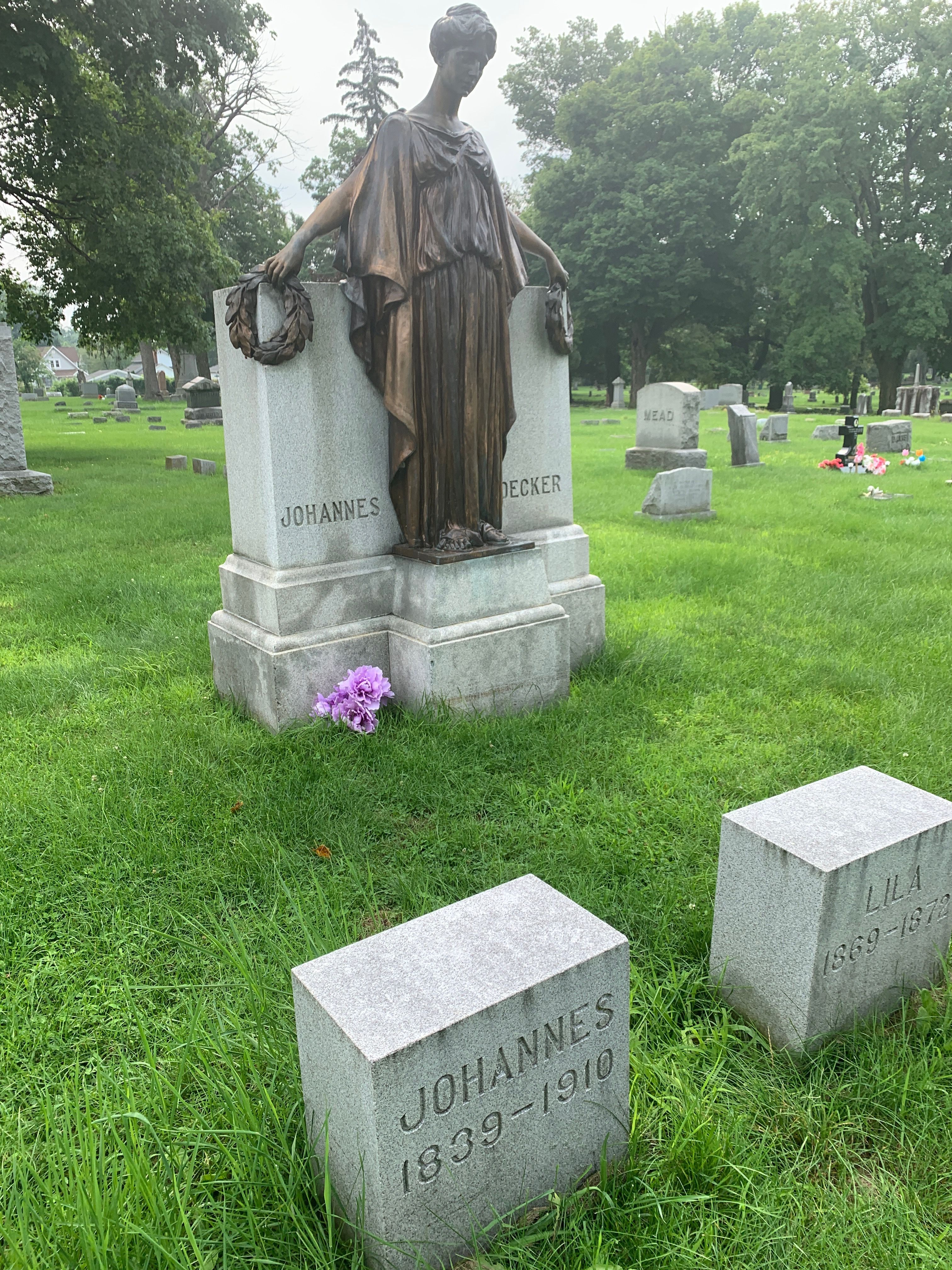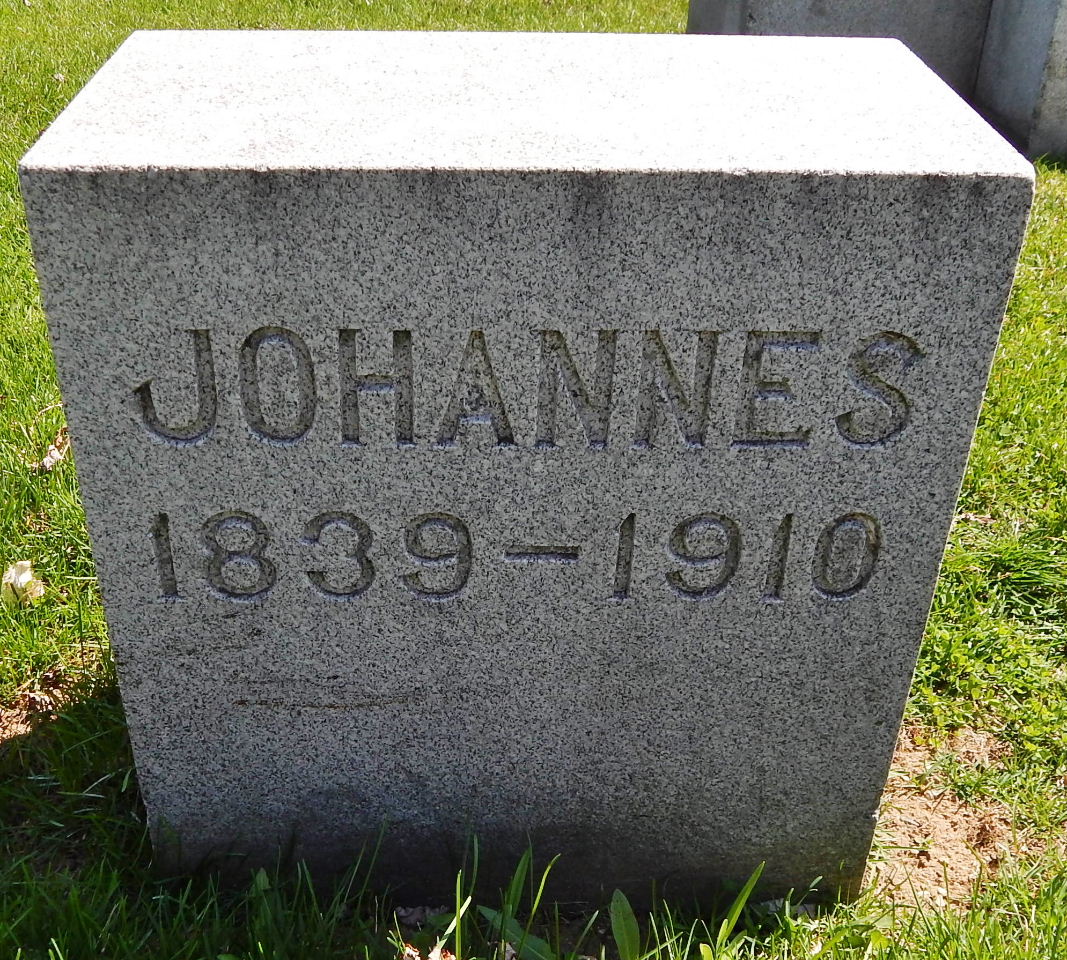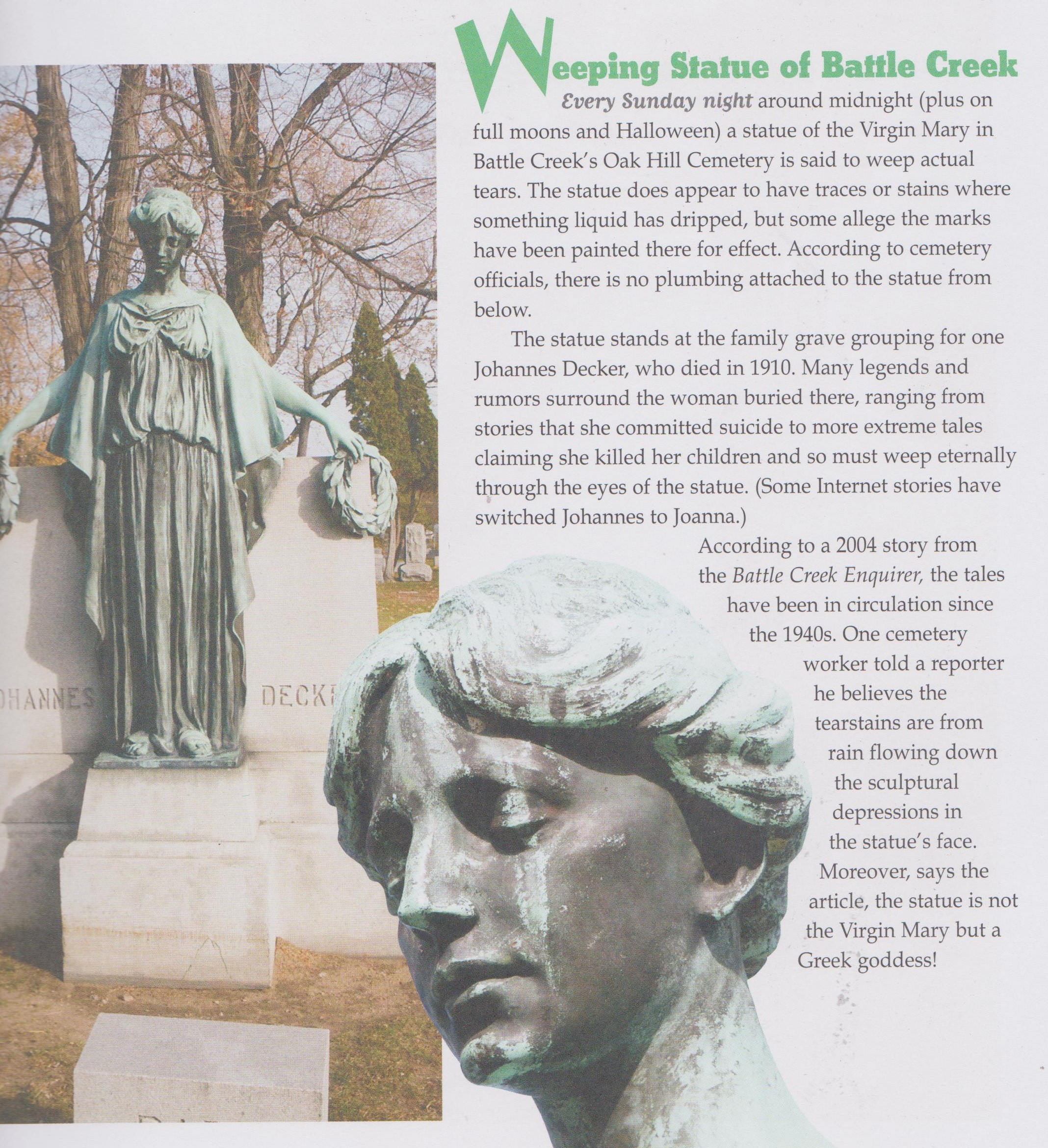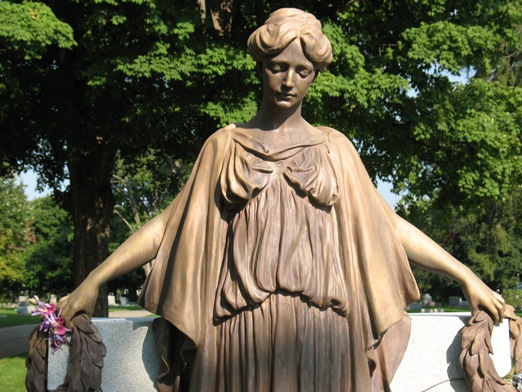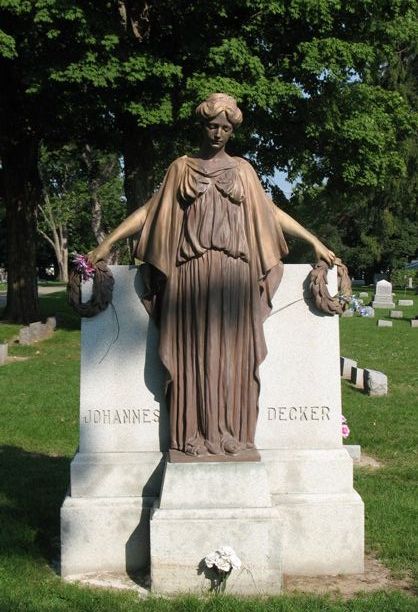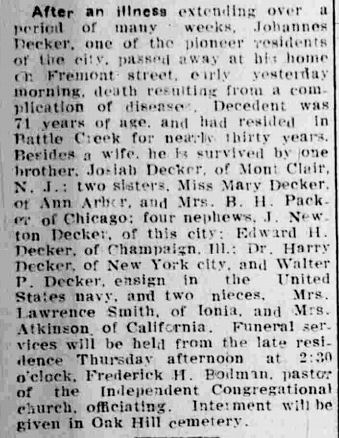Mr. Decker married Miss Ruth A. Whitmore, the daughter of Giddings and Susan (Houston) Whitmore of Fredonia township, Calhoun County, and the marriage occurred on September 4, 1867.
Johannes and Ruth had two children. Lila died when she as age three in 1872. She died of Scarlet Fever which was prevalent in those days. They had another child that was born premature and was delivered as a stillborn in 1875.
Johannes was seventy years old at the time of his death and Ruth was eighty-five at the time of her death.
In April of 1911, the sorrowing widow of Mr. Decker caused to be erected at his burial place a handsome memorial. The solid granite square, about six feet in height, was shipped to Battle Creek in its rough state from Barre, Vermont, and was cut by A.O. McNaughton.
Nellie V. Walker, a Chicago sculptor, designed the bronze figure of a woman which is on the granite base. A working model of the figure was awarded first prize at the Art Institute in Chicago.
The figure in the monument is known in the local area as Crying Mary. Urban legend says that the figure cries at midnight on Sundays. The figure is neither Mary nor does she cry. As she is made of bronze, patina developed on her over the ages and streaks formed as the rain fell down her face. She has since been sandblasted back to her original beauty.
Mr. Decker married Miss Ruth A. Whitmore, the daughter of Giddings and Susan (Houston) Whitmore of Fredonia township, Calhoun County, and the marriage occurred on September 4, 1867.
Johannes and Ruth had two children. Lila died when she as age three in 1872. She died of Scarlet Fever which was prevalent in those days. They had another child that was born premature and was delivered as a stillborn in 1875.
Johannes was seventy years old at the time of his death and Ruth was eighty-five at the time of her death.
In April of 1911, the sorrowing widow of Mr. Decker caused to be erected at his burial place a handsome memorial. The solid granite square, about six feet in height, was shipped to Battle Creek in its rough state from Barre, Vermont, and was cut by A.O. McNaughton.
Nellie V. Walker, a Chicago sculptor, designed the bronze figure of a woman which is on the granite base. A working model of the figure was awarded first prize at the Art Institute in Chicago.
The figure in the monument is known in the local area as Crying Mary. Urban legend says that the figure cries at midnight on Sundays. The figure is neither Mary nor does she cry. As she is made of bronze, patina developed on her over the ages and streaks formed as the rain fell down her face. She has since been sandblasted back to her original beauty.
Gravesite Details
Burial date 1/21/1910
